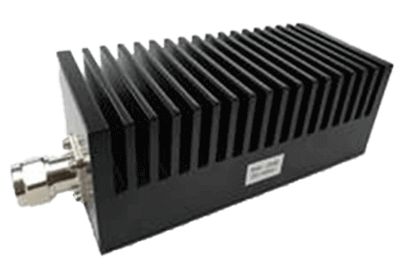What Is a Fixed Attenuator?

A fixed attenuator is a circuit or device designed to reduce the strength of an incoming signal to a specified level, typically measured in decibels (dB).
The most common type of attenuator features male and female BNC or F-type connectors on both ends, with the attenuator body sandwiched between the connectors. These attenuators are compact and roughly the same size as the connectors in terms of thickness.
Some types of fixed attenuators allow for switching between various attenuation levels.
Fixed attenuators are used not only for electrical signals but also for measurements involving physical quantities, such as light.
Uses of Fixed Attenuators
Fixed attenuators serve several purposes, including adjusting the output signal level in relation to the input signal, achieving impedance matching between the receiving and transmitting sides to obtain the desired output, and preventing unwanted reflections in a circuit. They are also used to minimize the generation of unwanted reflected waves in a circuit.
While fixed attenuators reduce signal strength, boosters, which are circuits or devices that amplify input signals to the desired level, are employed when input signal levels are too low. For instance, boosters are used in areas with weak reception to enhance the performance of TVs and radios by amplifying incoming signals.
Principles of Fixed Attenuators
Fixed attenuators consist of resistors arranged in a T-shape or π-shape configuration.
The level of attenuation can be precisely controlled by adjusting the resistor values and the number of stages in the T- or π-shaped circuit.
Fixed attenuators are predominantly used in audio equipment and various broadcasting equipment, such as TV broadcasting.
In audio equipment, user-defined effects are added to the input audio signal within the internal circuitry before it is transmitted to the loudspeakers. Many of these effects have independent circuit configurations. If a circuit enhances low-frequency characteristics, the signal is passed from the output to the next stage of the circuit.
In such cases, it is crucial to maintain the output signal level within an optimal range. If the output signal level is expected to be too high, a fixed attenuator should be introduced into the circuit.
Excessive signal levels sent to the loudspeaker can result in distorted audio quality. Conversely, if the circuit configuration suggests that the output signal level will be too low, an amplifier circuit (booster) should be incorporated.
When receiving broadcast signals, like TV and radio, there are instances where the input signal level is exceptionally high. For example, signals may be received in close proximity to the broadcast transmitter. In such scenarios, a fixed attenuator should be placed before the antenna input terminal to reduce the incoming signal level to the desired level. Failure to do so may result in unwanted noise contaminating the reproduced video or audio.